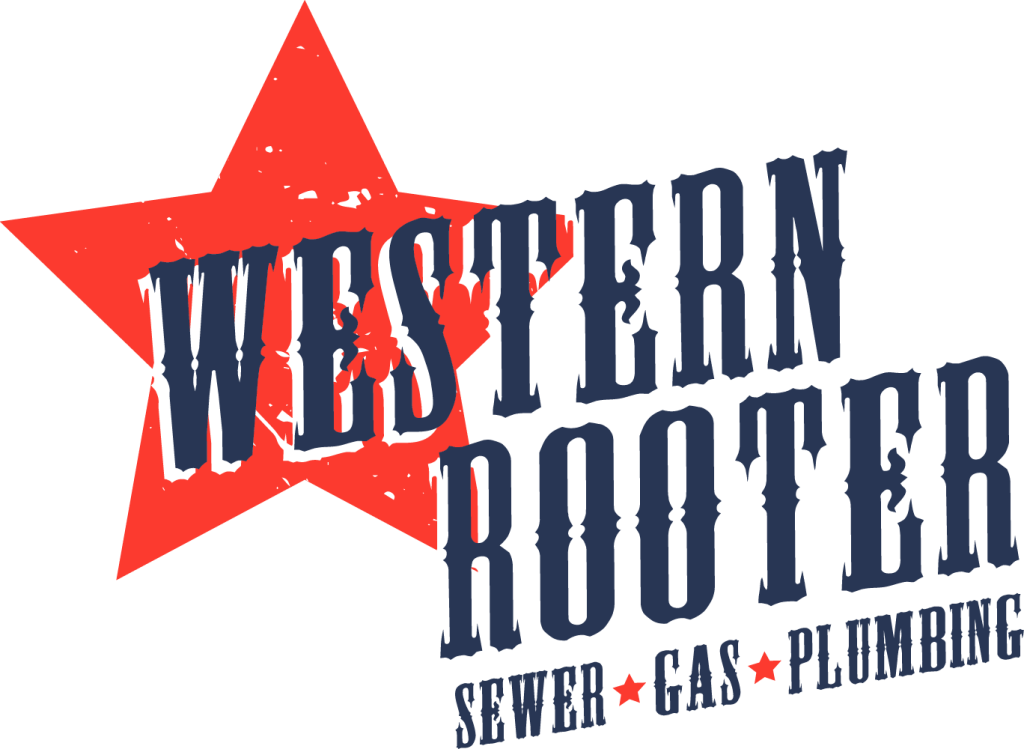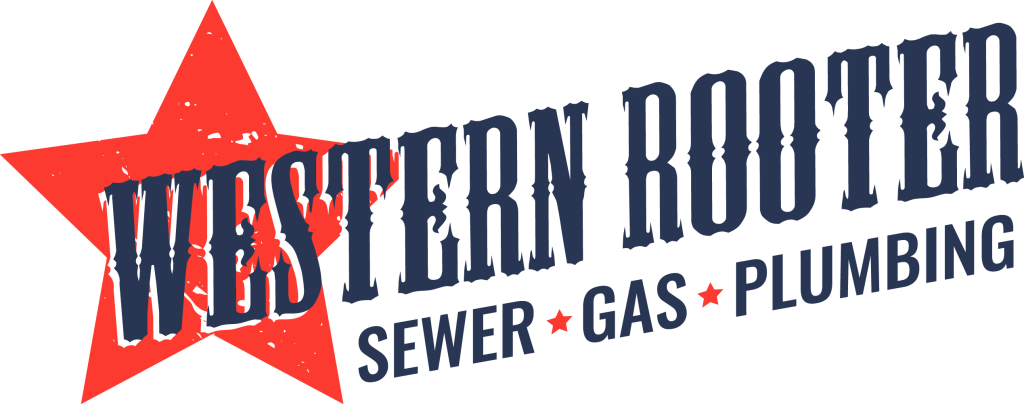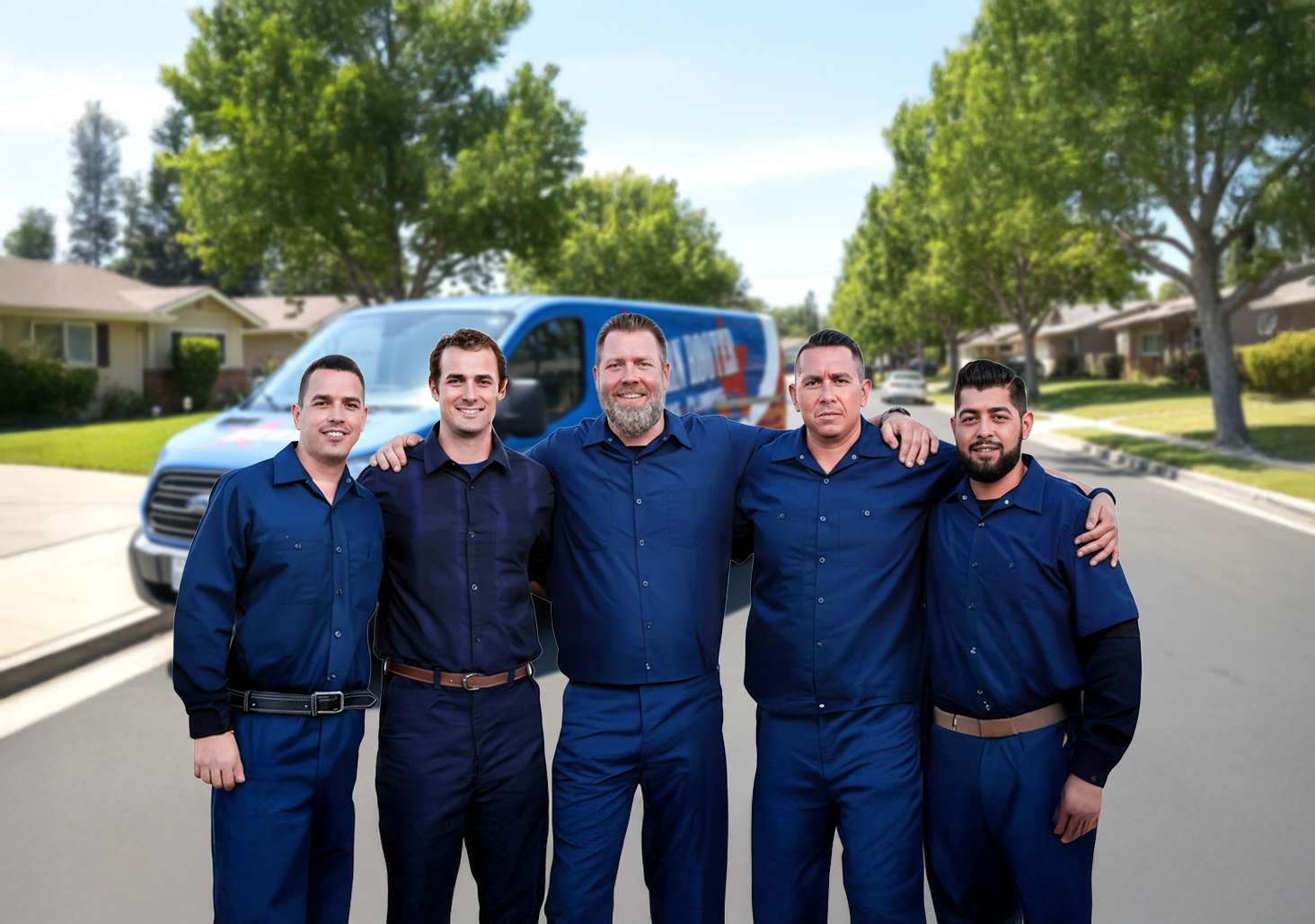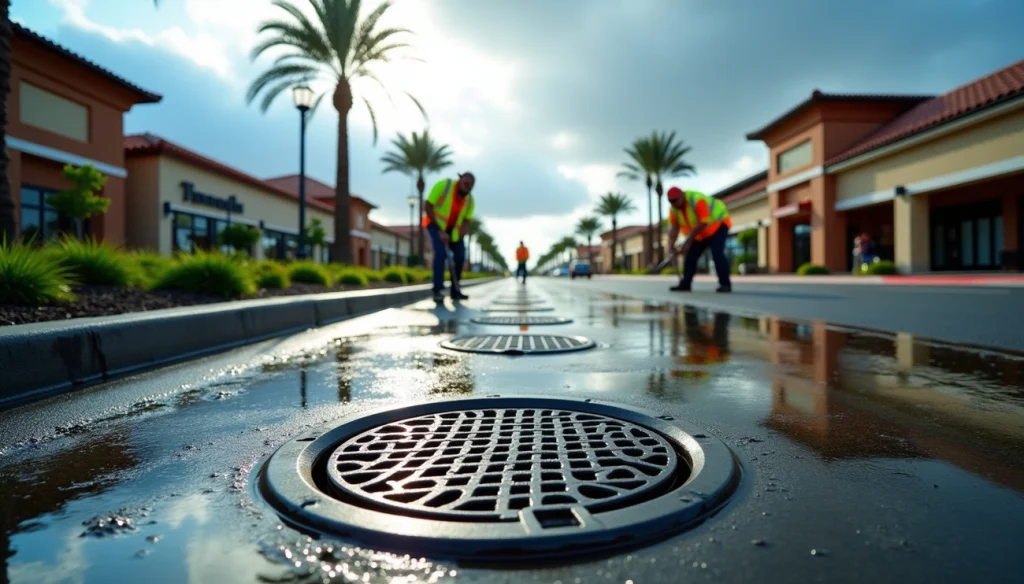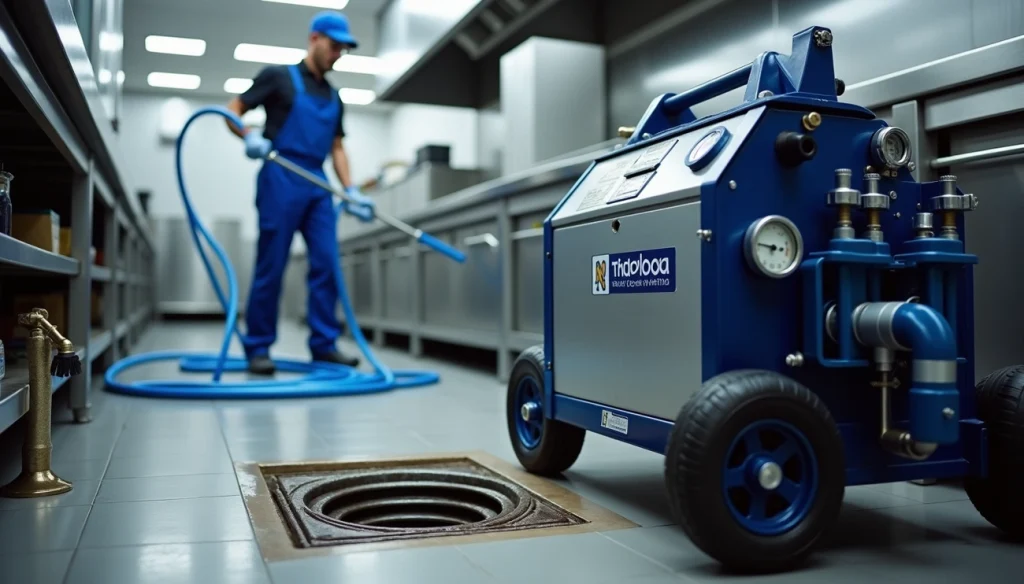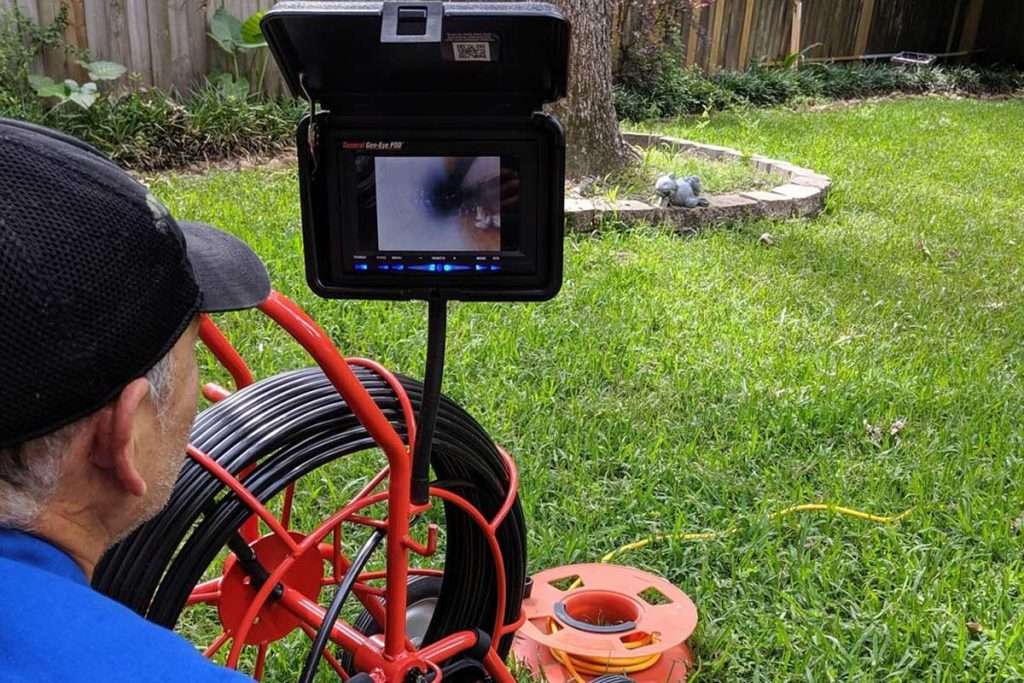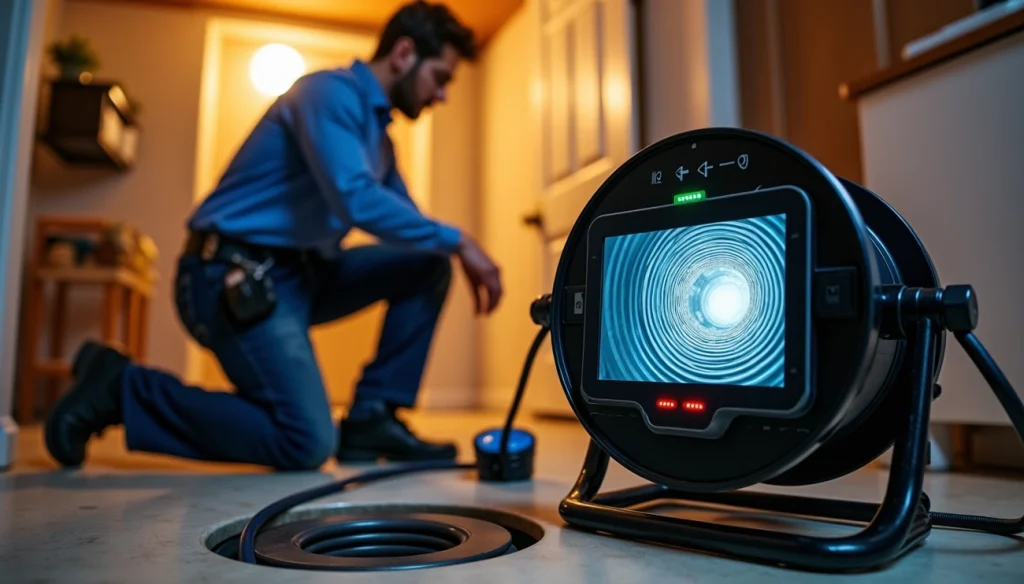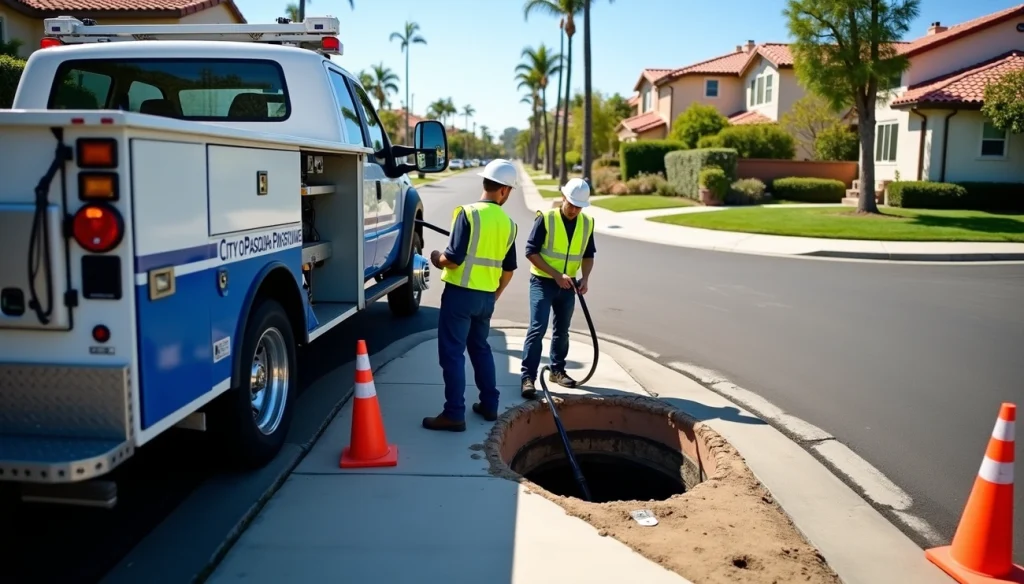American households waste nearly 1 trillion gallons of water yearly from plumbing leaks and burst pipes. A single dripping faucet that leaks once every two seconds wastes over 3,000 gallons of water annually.
These leaks affect more than just water waste – they can get pricey. Typical plumbing repairs average $330 and could climb to $950 for severe problems. Regular plumbing system maintenance is vital to protect your property and budget. Your early detection of hidden leaks, corrosion, and other issues through maintenance can save you money and hassle later.
Homeowners and property managers who understand the basics of preventative maintenance can avoid emergency repairs and extend their plumbing system’s life. This detailed guide will show you how to protect your pipes, prevent water damage, and maintain your plumbing system professionally.
Understanding Your Plumbing System: The Foundation of Routine Maintenance
Your home has a complex network of pipes and fixtures that work quietly behind the walls. You need to know what you’re taking care of before starting any preventative plumbing maintenance. The plumbing system does two things: it brings fresh water into your home and removes wastewater safely.
Common Components Every Homeowner Should Know
Your home’s plumbing has three vital subsystems that work together:
- The Water Supply System brings fresh, drinkable water throughout your home. Everything starts at your main water shutoff valve, where municipal water enters under pressure. This pressure helps water move upstairs and around corners to reach every faucet and fixture. The supply system has:
- Main water shutoff valve
- Water meter that registers usage
- Individual fixture shutoff valves
- Hot water heater and distribution lines
- The Drainage System (also called drain-waste-vent or DWV) removes wastewater from your home. The drainage pipes use gravity to move wastewater toward your sewer or septic system. This stops backups and leaks from reaching your living spaces.
- The Ventilation System plays a vital role. Vent pipes let sewer gasses escape while bringing air into the drainpipes. This ensures water and waste move properly through the system. Without good venting, you’d lose water seals in plumbing traps and sewer gasses would enter your home.
These components are the foundations of good preventative plumbing maintenance. They help you spot potential risks before they turn into expensive repairs.
How Your Plumbing System Ages
Your plumbing system won’t last forever. Its lifespan depends on your home’s age, any upgrades, and how well you’ve managed to keep it maintained. Different pipe materials age differently:
- PVC/ABS Pipes: Light, rust-proof plastic pipes often used for drain lines. They last 40-70 years.
- Copper Pipes: Strong and reliable for water supply lines, with great rust resistance. They last about 50 years.
- PEX Pipes: Flexible, easy-to-install pipes work for both hot and cold water supply.
- Galvanized Steel: Found in older homes, these pipes last 20-50 years before problems start.
Older neighborhoods with galvanized steel plumbing might already be reaching their end date. Even copper or PEX supply lines can develop issues without proper care.
Signs of a Healthy vs. Troubled System
A healthy plumbing system runs quietly and smoothly, delivering clear water at steady pressure. Watch out for these warning signs that show your system needs attention:
Signs of a Healthy System:
- Crystal clear water with no discoloration
- Steady water pressure throughout your home
- Quiet operation (minimal pipe noise)
- No moisture or water stains around fixtures or pipes
- Drains that empty smoothly and quickly
Signs of a Troubled System:
- Water Discoloration: Brown, yellow, or green water shows pipe corrosion
- Low Water Pressure: This might mean pipe corrosion, scaling, or leaks
- Unusual Noises: Banging, rattling, or whistling pipes point to loose fittings or pressure issues
- Visible Pipe Damage: Look for discoloration, corrosion, or moisture around exposed pipes
- Running Toilets: A toilet that won’t stop running shows problems with the flush valve, fill valve, or flapper
- Water Stains or Bubbling Paint: Wall or ceiling discoloration often reveals hidden leaks
- Unexplained Increase in Water Bills: Sudden spikes usually mean you have a leak somewhere
Homeowners who stay proactive can catch small plumbing problems while they’re still fixable—or spot bigger issues that need immediate attention. Regular checks and maintenance help your plumbing system last longer.
These basics give you the knowledge you need to keep up with preventative plumbing maintenance and save money on emergency repairs.
Creating Your Seasonal Plumbing Maintenance Calendar
Your plumbing system needs different kinds of care as seasons change. A well-laid-out maintenance calendar will help you spot issues before they become serious and make your pipes and fixtures last longer. These seasonal tips will help you create a preventive maintenance routine that protects your home and helps you save money.
Spring Inspection Checklist
Spring is the perfect time to check for any damage after winter and get ready for increased water usage. Start with a complete inspection of everything inside and outside:
- Check outdoor faucets and hose bibs for freeze damage and leaks when you first turn them on. A cracked pipe might show up as dripping or uneven water flow.
- Test your sump pump by pouring about five gallons of water into the basin. This makes sure it works properly before spring rains hit. This quick test can save your basement from flooding during heavy rains.
- Inspect exposed pipes for cracks, leaks, or damage signs, especially in basements, crawl spaces, and utility rooms.
- Examine toilets for slow leaks by adding food coloring to the tank—if you see color in the bowl after 30 minutes, you’ll need to fix a leak.
- Clean showerheads with vinegar to get rid of mineral deposits that can lower water pressure and efficiency.
On top of that, it’s smart to check your water heater after heavy winter use. You might want to drain and flush the tank to clear out sediment, which helps it work better and last longer.
Summer Water Conservation Strategies
Summer means using more water, which puts extra stress on your plumbing. Smart conservation during this season saves both resources and money on your bills.
Keep a close eye on outdoor water use, especially for your lawn and garden. Water early morning or late evening to waste less water through evaporation. This simple timing change can save lots of water during hot months.
Water-saving fixtures can make a big difference—low-flow showerheads, faucet aerators, and dual-flush toilets cut down water use without losing performance. These upgrades really pay off in summer when water use goes up.
Watch out for leaks that waste water. Big jumps in your water bill often mean hidden leaks somewhere. Even tiny leaks waste thousands of gallons each year.
You might want to collect rainwater for your garden and reuse greywater where you can for non-drinking needs. This gives you backup water during dry summer months.
Fall Winterization Steps
Fall preparation is vital to protect your plumbing from winter’s freezing temperatures. Taking precautions now helps prevent frozen and burst pipes later:
Disconnect, drain, and store all outdoor hoses to stop water from freezing and damaging both hoses and connecting pipes. Keep outdoor faucets open so any leftover water can expand safely if it freezes.
Insulate exposed pipes in unheated spaces like basements, attics, and crawl spaces before it gets cold. Good insulation works best to prevent frozen pipes.
Service your water heater by checking its temperature (120°F works best), looking for corrosion, and testing the pressure relief valve. This maintenance keeps it running smoothly all winter.
Clear gutters and downspouts of leaves and debris to prevent ice dams that can damage your roof and force water back into your house.
Winter Freeze Protection Tactics
Winter brings the highest risk of getting pricey plumbing damage from freezing. These protection tactics will help:
Keep your house temperature steady—at least 55°F—even when you’re not home. This keeps pipes warm enough inside.
When it’s extremely cold, open cabinet doors under sinks so warm air reaches the plumbing. Let vulnerable faucets drip a bit to prevent freezing.
Block any cracks near utility pipe entrances to stop cold drafts that might freeze pipes. Even small gaps let in enough cold air to cause trouble.
Learn where your main water shutoff valve is for emergencies. This knowledge can limit water damage if a pipe bursts.
This seasonal maintenance calendar gives you a systematic way to prevent problems and helps your plumbing system last longer.
Money-Saving Inspection Techniques for Early Problem Detection
Your best defense against pricey plumbing disasters starts with regular checks and catching problems early. Water leaks that go unnoticed can wreck your home and lead to repair bills in the thousands. A few simple methods can help you spot and fix issues before they turn into major headaches.
How to Spot Hidden Leaks Before They Cause Damage
Hidden leaks often show up where you can’t see them—behind walls, under floors, or inside ceilings. Your water meter offers a simple way to check for hidden leaks. Just turn off all water in your house and write down the meter reading. Don’t use any water for 20-30 minutes, then check again. A different reading means you’ve got a leak somewhere in your system.
Physical signs of hidden leaks include:
- Water stains or bubbling paint on walls and ceilings
- Mold growth or musty odors in specific areas
- Warm spots on floors (with under-slab piping)
- Your water bill jumps unexpectedly—a family of four using more than 12,000 gallons monthly probably has a leak
Quick checks of cabinets under sinks, exposed pipes, and areas around toilet bases can catch small leaks before they turn into big problems.
Water Pressure Testing Made Simple
Bad water pressure can harm your plumbing system as time goes by. Your home’s water pressure should stay between 40-60 psi. Here’s how to test it:
- Get an inexpensive pressure gage from any hardware store
- Attach it to an outdoor faucet or washing machine cold water supply
- Turn the water on fully and read the gage
- Readings above 75 psi mean you should think about installing a pressure regulator
High pressure can damage pipe connections, fixtures, and appliances, which might lead to burst pipes or washing machine hose failures.
Checking Fixtures and Appliances for Efficiency
Toilets use up to 30% of your water, so try this simple dye test: add food coloring to the tank and wait 10 minutes. Color showing up in the bowl without flushing points to a leak that needs fixing.
Look for oxidation or discoloration around water heaters, washing machines, and valve connections—these often signal slow leaks. Your showerheads and faucets might also have mineral buildup that blocks proper flow.
Regular plumbing maintenance saves water and protects your home from disasters while keeping those utility bills under control.
Essential Maintenance Tasks Every Property Owner Should Master
Learning a few basic maintenance tasks helps protect your plumbing system from emergency repairs that can get pricey. These basic skills are the foundations of any good preventative plumbing strategy.
Drain Cleaning Best Practices
Good drain maintenance stops clogs and keeps your plumbing working well. Mix baking soda and vinegar with hot water to clean drains regularly. This natural mix dissolves buildup and gets rid of smells while being gentler on pipes than chemicals.
Skip harsh chemical cleaners that damage pipes. A better option is to get drain catches or screens that stop hair, food bits, and debris from getting into your plumbing. More importantly, watch what goes down your drains. Grease, coffee grounds, and too much soap build up slowly and cause blockages and damage.
Tough clogs need a plunger or drain snake instead of chemicals. These tools clear blockages better and won’t hurt your pipes.
Water Heater Maintenance for Extended Lifespan
Your water heater needs yearly maintenance to work its best:
- Clean out your water heater tank yearly to remove sediment. This makes it work better and last longer.
- People with hard water should clean every six months since sediment builds up faster.
- The temperature and pressure relief valve needs yearly checks to stop dangerous pressure buildup.
- Look at the anode rod every 3-5 years and replace it if needed. This part stops your tank from rusting.
Strange noises like popping, cracking, or rumbling usually mean too much sediment has built up. This needs quick attention.
Toilet Tune-ups That Prevent Costly Repairs
Toilets see lots of daily use, so they need regular care to avoid problems. Check the flapper valve, fill valve, and other tank parts often for wear or damage. You can spot leaks by adding food coloring to the tank. If color shows up in the bowl after 30 minutes without flushing, you’ve found a leak.
Fix running toilets right away. They waste water and make your bills higher. Usually, a new flapper (about $20) fixes everything.
Note that regular maintenance helps your fixtures last longer and stops emergency repairs that usually cost much more than routine care.
Smart Technology Integration for Modern Plumbing Maintenance
Smart technology has reshaped preventative plumbing maintenance. Property owners now have powerful tools that detect problems before they get pricey. Your maintenance routine with smart devices will give you early warnings and detailed information that old methods can’t provide.
Water Leak Detectors Worth the Investment
Smart leak detectors protect your property against water damage. These devices spot leaks that human eyes miss and send instant smartphone alerts. Homeowners can save thousands in repair costs with this early warning system.
Battery-powered, puck-sized devices sit near leak-prone equipment like water heaters, washing machines, or dishwashers. High-end options like Flo by Moen and Phyn Plus come with advanced features:
- Automatic water shutoff during leak detection stops major damage
- Live monitoring through smartphone apps
- Alerts for active leaks and freezing pipe conditions
Water leak detectors range from $50-$500, based on features. The price might seem high at first, but water damage insurance claims average $12,000-$15,000. These devices are economical solutions to prevent damage.
Smart Water Meters for Usage Monitoring
Smart water meters elevate monitoring by tracking your home’s entire water consumption. These systems link to your main water supply and help you learn about usage patterns through dedicated apps.
The benefits include:
- Live water usage monitoring spots inefficiencies
- Quick detection of unusual consumption patterns shows potential leaks
- Conservation guidance cuts water usage by 15%
- Detailed breakdown shows water use by individual appliances and fixtures
Products like Flume detect usage down to one-hundredth of a gallon—enough to spot a dripping faucet. This precision helps you fix small issues before they become major problems.
Western Rooter can help you integrate smart plumbing technology into your maintenance plan. Call today for a free estimate!
Conclusion
Preventative plumbing maintenance protects your home from water damage that can get pricey and leads to unexpected repairs. Your property stays protected when you perform regular system checks, seasonal maintenance, and detect problems early. This approach also helps your equipment last longer.
Smart technology provides another layer of protection by monitoring leaks and usage automatically. These modern tools work alongside traditional maintenance practices to create a complete approach that saves time and money.
Note that preventative maintenance works best when done consistently. You can start with simple inspections and seasonal care routines as you become skilled at maintenance. The key is to fix small issues right away before they turn into major problems.
Western Rooter’s experts can help you create a customized preventative maintenance plan that protects your plumbing investment long-term. Contact us today to get your free estimate.
